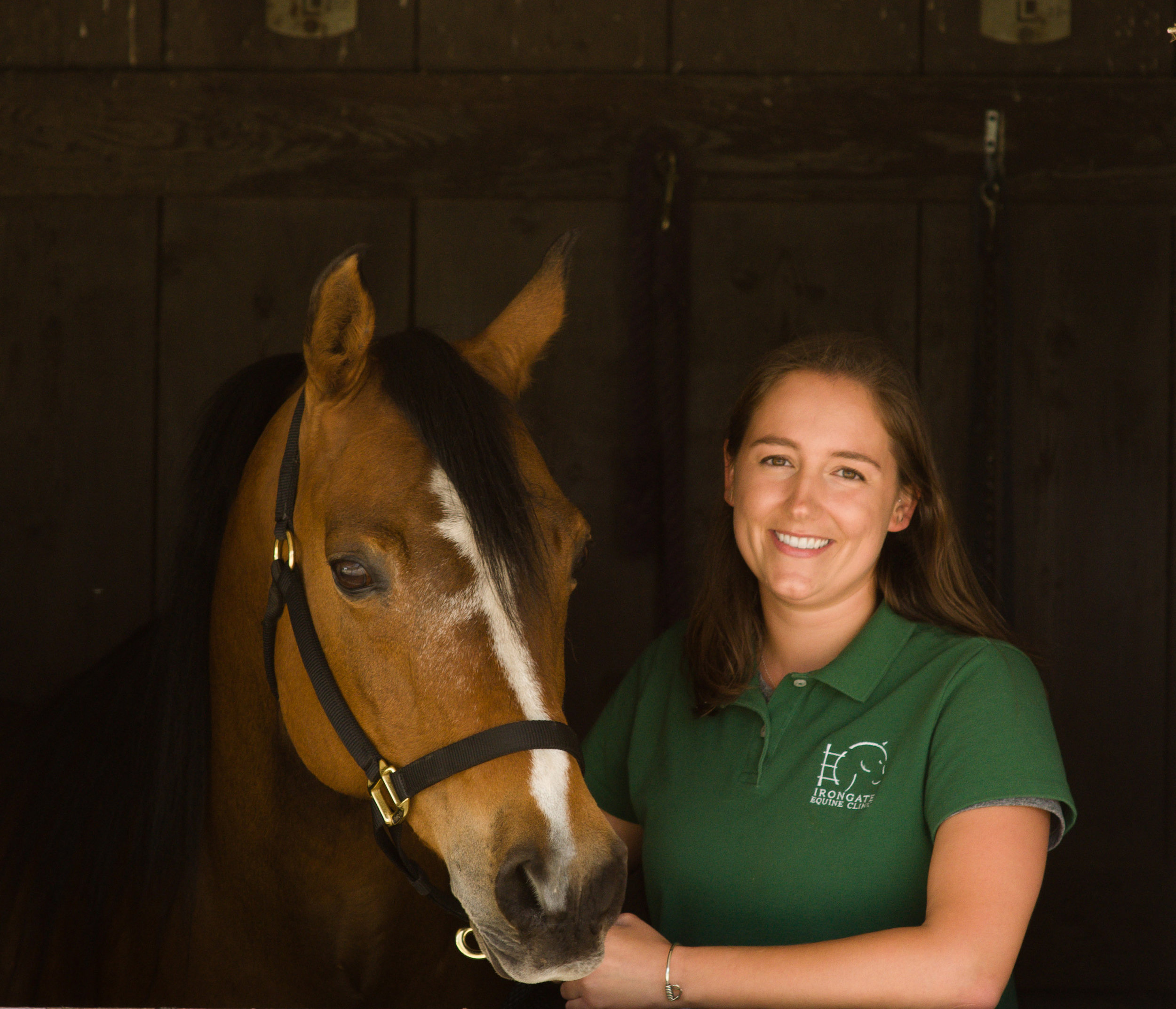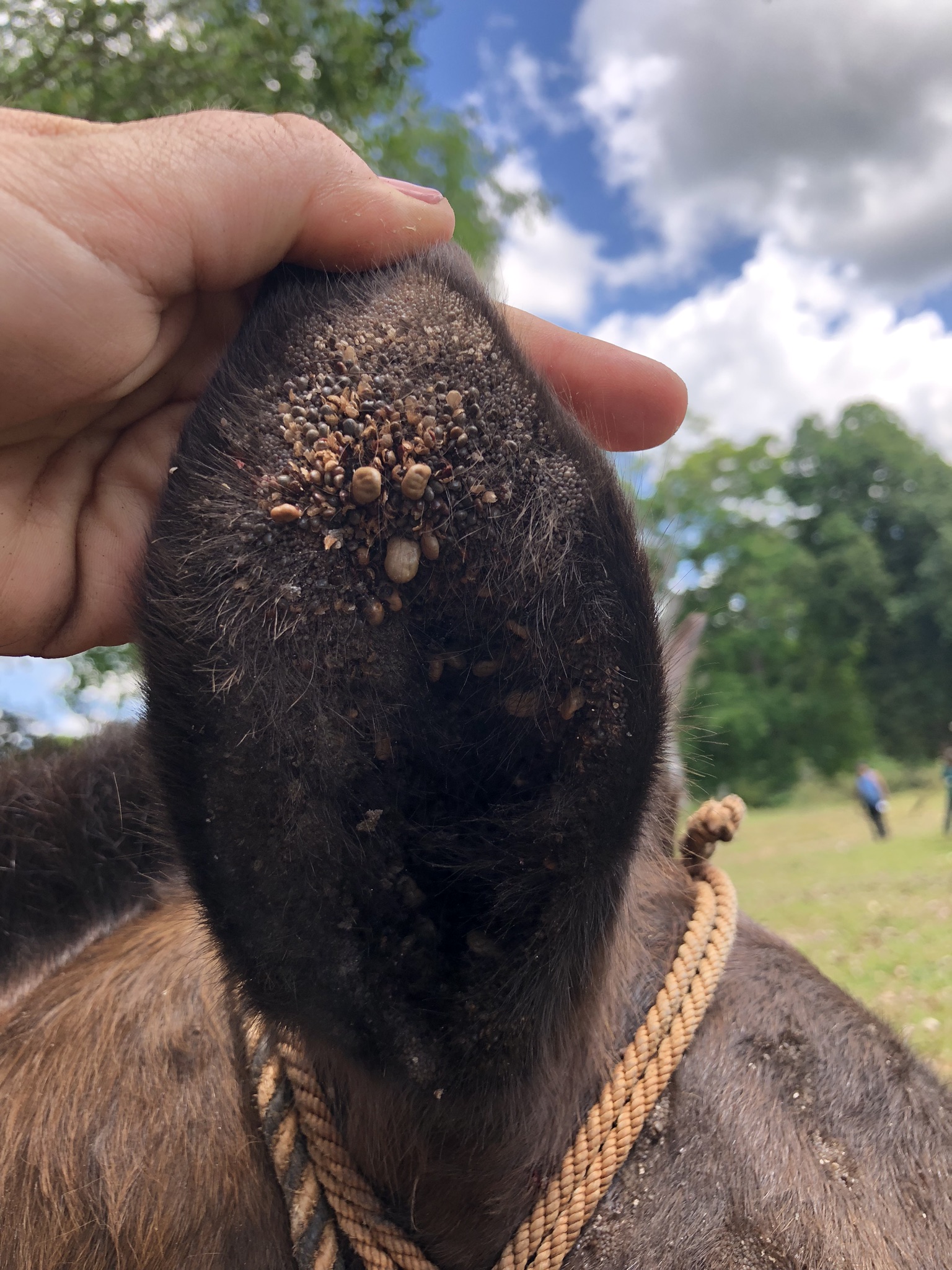This January, I was very fortunate to receive a scholarship from the American Association of Equine Practitioners (AAEP) to attend the Equitarian Initiative’s Workshop. The workshop’s objectives are to provide an understanding of the critical role of working equids around the world, discuss examples of successful equitarian programs, and allow participants to apply their individual skills in a field setting.
The Costa Rica Team
This year’s team consisted of 28 individuals (veterinarians, veterinary students, farriers, and others) representing eight countries in total. The group was divided into four teams. Each team was assigned to a specific station each day: triage (two teams per day), dentistry, or surgery. The workshop consisted of two days of lecture and four days of clinical field work. Over the course of the week, we treated a total of almost 350 equine patients.
The dental team working on our smallest patient of the trip. This little stallion had a significant overbite and will need yearly dental care from our doctors.
This year, the workshop took place in Costa Rica’s Osa Peninsula in the southwest region of the country. This is the fourth year the workshop has taken place here. Several veterinarians live and work in this region, but do not routinely see equine patients. The majority of people living here cannot afford veterinary care for their horses.
Though these horses rarely receive veterinary care, the majority of our patients were in excellent body condition. Owners typically rent lush pastures for their horses to graze.
On our first clinic day in the Rio Nuevo community, we treated a total of 119 equines. Many of these horses, donkeys, mules, and ponies are used to haul products on palm oil plantations. Thanks to our triage teams, each patient received a full physical exam and was vaccinated against rabies, tetanus, and mosquito-borne encephalomyelitis. Patients were also dewormed and treated with a topical antiparasitic medication. Each equine patient was then directed to our surgery or dentistry teams if indicated. Medical cases such as heaves, insect bite hypersensitivity, and anhydrosis were managed by our triage teams.
Many patients arrived at our clinic with heavy tick infestations. In this part of the world, ticks can transmit equine piroplasmosis. Particularly heavy infestations can even lead to anemia.
The second clinic day took place in the San Juan community, where we treated a total of 98 equines. While working, we were serenaded by thousands of cicadas, and enjoyed a brief visit from a pair of bickering scarlet macaws.
An interesting alternative to branding: Many of our patients could be traced to their herdmates by their matching haircuts.
Our third clinic day was especially impactful. We took a breathtaking three hour drive to the Boruca (Brunka) indigenous reservation, where we treated 27 equines. This number may not sound significant, but it represents a huge success - many foreigners have promised this type of work in the past but have consistently failed to show up. The horses in this part of Costa Rica have never seen a veterinarian. We expect the number to grow each year as we continue to build a relationship with this community. After our work was done, our host, Don Ismael, shared a few stories with us. It was fascinating to learn more about the history and culture of these wonderful people.
Don Ismael demonstrating the mask he wears for an annual community ceremony.
The fourth and final clinic day took place in the La Palma community, where we cared for a total of 103 equine patients. As the daylight faded, we loaded our supplies onto the bus for a final time before lining up for one last group photo with the farm owners’ family.
The typical scene at a community clinic day. A castration is being performed on the left, and one of our triage teams is hard at work on the right.
We know we made a positive impact on several hundred individual animals this week. More importantly, we hope that our conversations with their owners will have a lasting impact on community wellbeing and working equine welfare in Costa Rica’s Osa Peninsula.
This little mare’s family depends on her to transport them to work each day. Her owner, who is recovering from a broken hand, had been trying valiantly to help his horse’s wound heal.
We further customized her saddle pads to relieve pressure from her healing saddle sore.
Dr Lauren Alderman, DVM, CVA, CVSMT































